A hydroelectric generator is a device that utilizes the energy of water flow to convert it into electrical energy, and is usually installed in waters such as rivers, reservoirs or dams. It utilizes the kinetic energy of the water flow to drive the rotor of the generator to rotate, generating electrical energy through electromagnetic induction. Hydroelectric generators are an environmentally friendly, renewable energy source with stable power generation performance and long service life, and are widely used around the globe. DIY hydroelectric generators can not only provide you with clean energy, but also increase your understanding and awareness of renewable energy sources. With simple materials and basic tools, you can create a small hydroelectric generator to provide clean energy for your home. In this article, we'll cover how to design and build your own hydroelectric generator, giving you insight into the principles and providing detailed steps and advice for practicing.
Basic Knowledge
Hydroelectric generators are favored for their environmental friendliness, high renewability, and stable power generation characteristics. It has a relatively low impact on the environment, produces no greenhouse gas emissions and generates no toxic waste. At the same time, hydroelectric generators have high efficiency and are able to provide a stable supply of electricity, which is important for guaranteeing energy security and sustainable development. Therefore, hydroelectric generators play a crucial role in the global energy mix to a certain extent.
The working principle of hydroelectric generators is based on the conversion of water energy into mechanical energy, which is then converted into electrical energy by a generator. When the water flows through the blades of the water wheel, the blades are impacted and pushed by the water flow, which drives the water wheel to rotate. The water wheel is connected to the generator shaft, and the rotation of the water wheel rotates the generator rotor, which in turn generates current in the wires. This current is processed through a transformer and can be delivered to the grid for power supply use, or used to drive a variety of electrical equipment. Get started today with PowerHome's immersive step-by-step crafting experience of the fun and fulfillment of hydroelectricity!
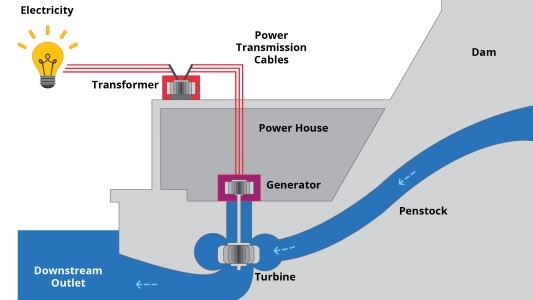
From its working principle, it can be concluded that the most critical components in a hydroelectric generator are the turbine and the generator.
Materials List
- PVC pipes and plates in different sizes
- Marker pen
- Pencil (or any marker)
- Compass and ruler
- Scissors and paper cutter
- A piece of paper
- Glue
- Wires
- Plastic or glass sheet
- Sandpaper (optional)
- Spray gun (optional)
DIY Process
Step 1: Cut a PVC pipe into a short cylinder as shown in the figure and record its diameter. This short, thick one is called “Pipe A”.
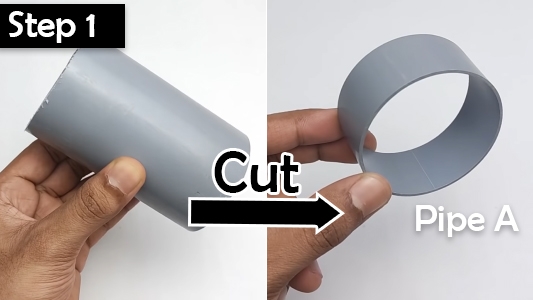
Step 2: Using the compass, draw a circle of the same diameter as the inner circle of the cylinder on the PVC plate and cut it out with scissors. Repeat the above operation on another PVC plate and paper to get 3 circles of the same size (2PVC, 1paper).
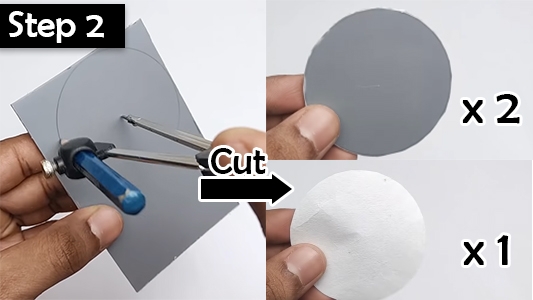
Step 3: Sand the edges of the two PVC plates with sandpaper to make them smooth. Test to see if the round plates and Pipe A match.
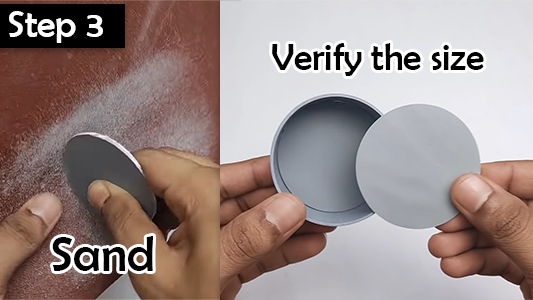
Step 4: Prepare another PVC pipe with a smaller diameter, then paste the circular piece of paper made in Step 2 onto its middle section and trace the circular outline with a pencil. Cut the pipe along the contour line to obtain the entity as shown in the figure. This long, hollow one is called “Pipe B”.
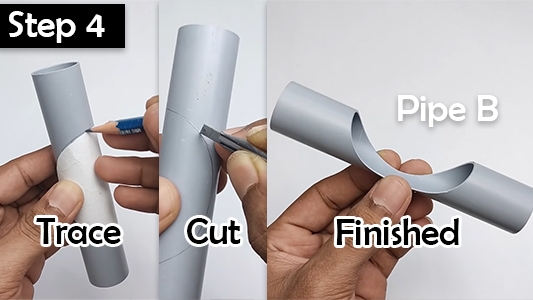
Step 5: Combine Pipe A with Pipe B. Pass a pencil through Pipe B and trace the outline of the overlapping portion on Pipe A. Bold it and cut along the outline to form the entity as shown.
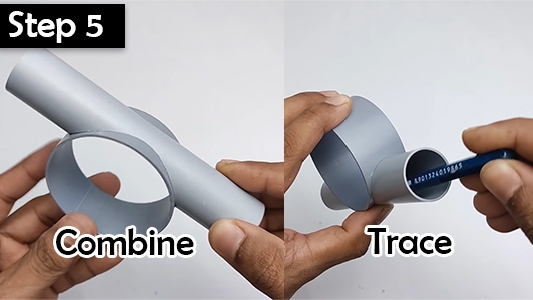
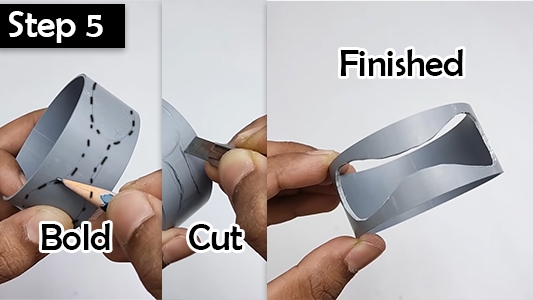
Step 6: Spray paint Pipe B black and glue Pipes A and B together.

Step 7: Prepare a DC motor and record the diameter of the disk at the bottom of its output shaft. Take one of the two PVC plates made in Step 3, make a hole in the center of the circle of the same size as the recorded diameter, insert the motor into it and glue it. This round plate is called “Plate A”.
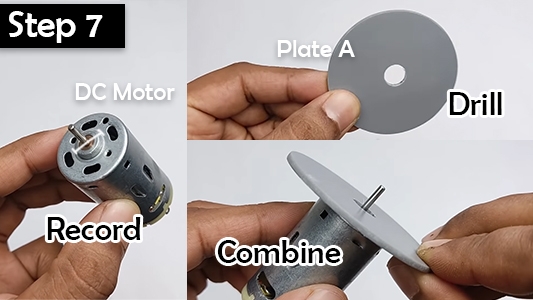
Step 8: Take out another PVC plate and make a hole in the center just big enough to accommodate the motor's shaft. Using a pencil, draw 8 equal sized sectors on it as shown. This one is called “Plate B”.
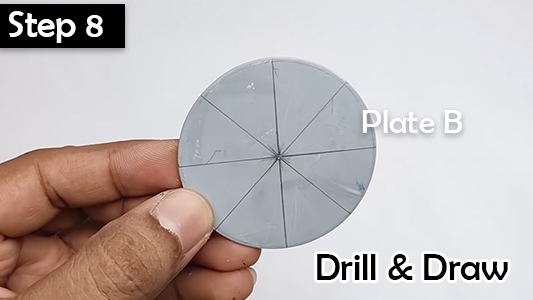
Step 9: Cut off the end of the marker pen and glue it to the center of the circle on Plate B.
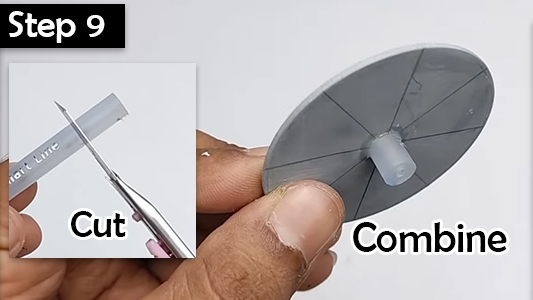
Step 10: Prepare a new piece of PVC plate and use a pencil to draw multiple square grids on the plate with the same side lengths as the sectors described in Step 7.
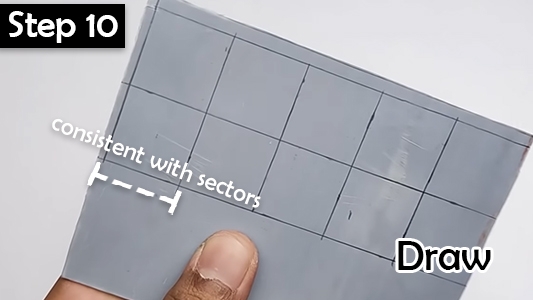
Step 11: Cut out eight of these square grids, place them along the scalloped edges and glue them together as turbine blades, painting them black to distinguish them from Plate A.
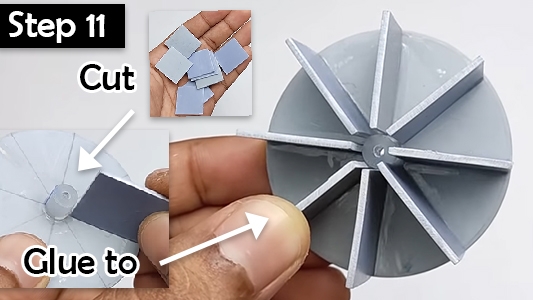
Step 12: After combining Plate A and Plate B together, insert them into Pipe A. The main body of the hydroelectric generator is complete now.
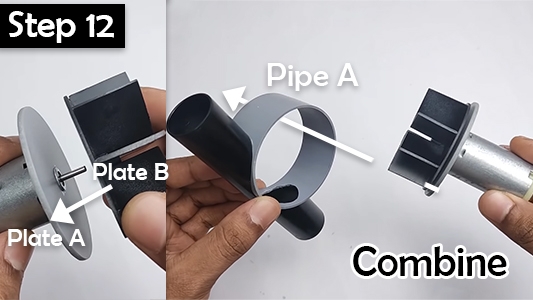
Step 13: Take a thin piece of plastic and mount it outside the blades to avoid splashing caused by their rotation.
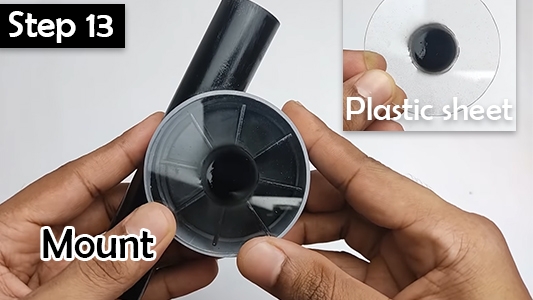
Step 14: Connect the motor to the device to be powered (in this case a light bulb) with wires, and then test the results by filling the Pipe B with water.
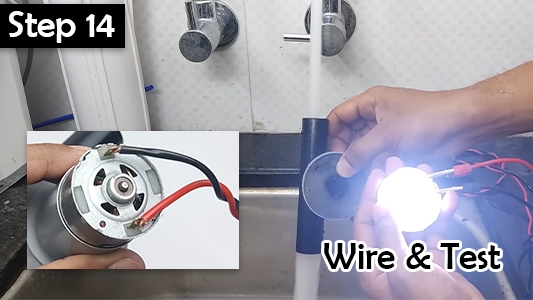
Finally, the system is tested and adjusted to ensure that it is stable and able to produce enough electricity. Through this project, you will not only learn a lot about hydroelectricity, but also experience the fun and challenge of doing it. That's all you need to do to make a simple hydroelectric generator. If you want to buy a really high-power hydro generator, please visit powerhome.com, an online store focusing on off-grid living. We will provide you with quality products and attentive after-sales service.
(1).png)
(1).png)